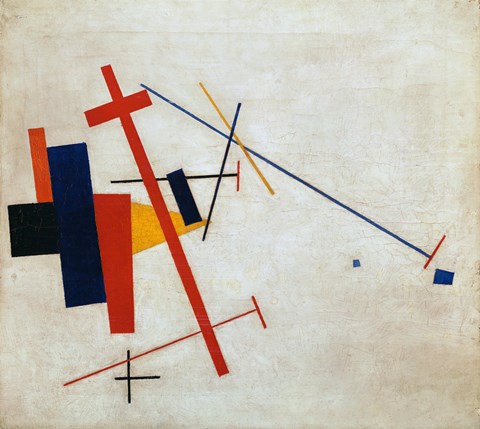Scan barcode
A review by glenncolerussell
The Non-Objective World: The Manifesto of Suprematism by Kazimir Malevich
5.0

The Non-Objective World: The Manifesto of Supermatism contains not only Kasimir Malevich's manifesto but over 90 black-and-white prints, giving the reader a broad overview of the radical vision and creative output of this Russian avant-garde artist who had a profound influence on the course of modern abstract art.
To fully comprehend Malevich's innovation and revolutionary approach to art, imagine your average art-goers, men and women visiting galleries and museums, people who particularly enjoy the way an artist applies his or her skill in painting a broad summer landscape with swans in a lake and cows grazing in a meadow under clouds in the style of, say, John Constable, or perhaps a fruit and flower still life or portrait of a famous leader. Now imagine these same art loving men and women entering a gallery where the featured artwork is a painting of a black square on a white background. This was precisely the experience of art-goers during a 1913 exhibition in Russia.
Predictably, the art-goers felt betrayed since their familiar art was nowhere to be found, such recognizable realistic art providing them with beautiful objects to look at and think about (concepts) as well as firm aesthetic grounding, a grounding serving art lovers since the time of the Renaissance.
Thus, Kasimir Malevich responded with his Supermatism Manifesto, a declaration of purpose and intent wherein Malevich wrote 65 bold statements expressing his philosophy and views on art, the artist and creativity, citing how the realism those art-goers hanker for has absolutely no value in the type of art worth creating since objectivity is meaningless and concepts are worthless. Rather, for Malevich, art expresses the fullest possible feeling and ignores the familiar appearance of objects. As stated in his Manifesto, in such a non-objective art there is a blissful sense of liberation and nothing is considered real except feeling. And the Supermatist does not observe or touch, the Supermatist feels.

So, how should we encounter his black square on a white background? Malevich's manifesto states the equation clearly: "The black square on the white field was the first form in which nonobjective feeling came to be expressed. The square = felling, the white field = the void beyond the feeling." Malevich goes on to state, "The Supermatists have deliberately given up objective representation of their surroundings in order to reach the summit of the true "unmasked art" and from this vantage point to view life through the prism of pure artistic feeling."
And he goes on further in stating, "Now that art, thanks to Suprematism, has come into its own that is, attained the pure, unapplied form and has recognized the infallibility of nonobjective feeling, it is attempting to set up a genuine world order, a new philosophy of life. It recognizes the nonobjectivity of the world and is no longer concerned with providing illustrations of the history of manners." This is strong language. No wonder Malevich moved to abstraction.
In addition to the Black Square, we have Malevich's memorable Black Circle, where, on a white field, the large black circle is positioned toward the top and on the right side of the square canvas. There is something unspeakably pure and unique about this painting, so simply yet so provocative. Who would have envisioned a painting of a black circle on a white field having such a transforming effect on viewers and the world of art?
Perhaps, applying Malevich's equation of the black square, we unconsciously equate the black circle with our feelings and the white field as a realm beyond our feelings. Whatever the reason, we join Malevich in crossing an artistic threshold - we enter the modern world, a modern world with a place, both permanent and distinctive, for abstract art. And by launching this phase of modernism in his writing and his art, Kasimir Malevich occupies a prominent position in history.
